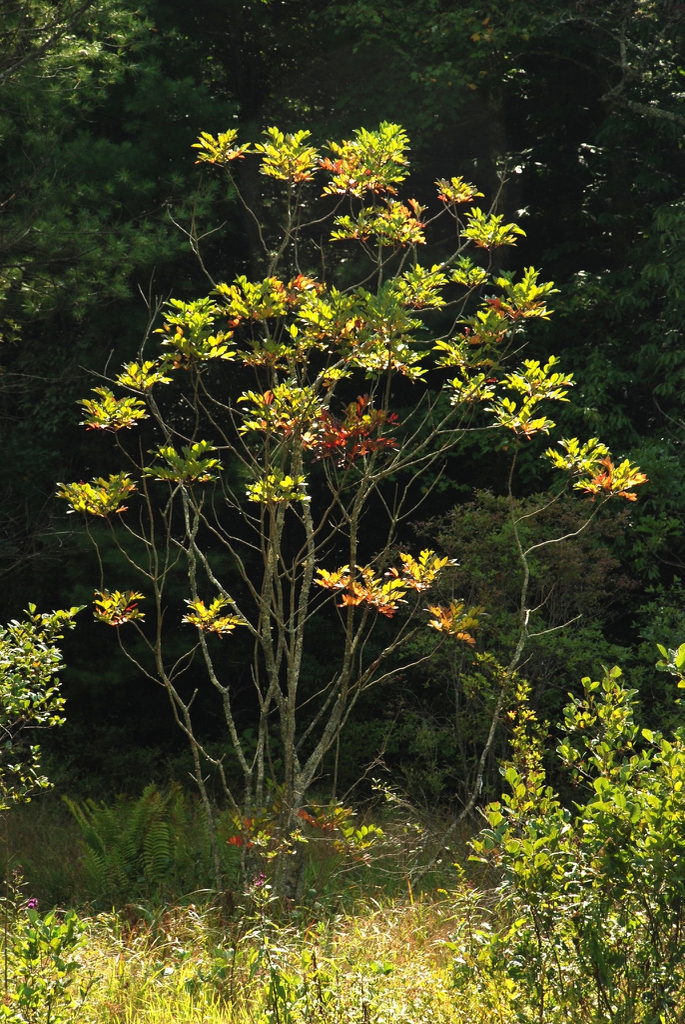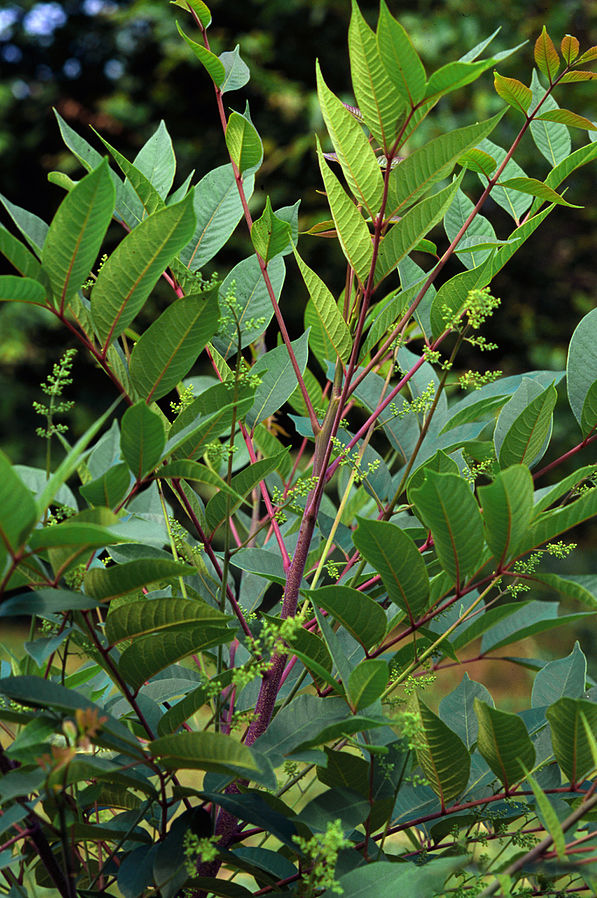
Also called swamp-sumac and thunderwood, this deciduous woody shrub or small tree is native to the wooded swamps, bogs and other moist soils of eastern United States and extreme southeast Canada. It is a member of the cashew family, Anacardiaceae, that also includes poison ivy, poison oak, and mango. Plants grow up to 30′ tall and have reddish to light gray bark with conspicuous lenticels and one to many branched stems that ooze a dark poisonous sap when cut or broken. The alternate dark green leaves are carried on red petioles and are pinnately compound, with 7-13 oblong or elliptic leaflets 2-4″ long. They turn bright orange-red in the fall. The inconspicuous, greenish yellow, 5 petaled flowers appear in axillary, drooping panicles up to 8″ long in early to mid-summer. Male and female flowers usually occur on different plants but perfect flowers may also be present. The one seeded, berry-like fruit is 1/4″ in diameter, green to dull yellowish-white, and persists into winter when it provides food for birds and rabbits. It is toxic to humans. The genus name Toxicodendron, comes from the Greek words, τοξικός (toxikos), meaning poison, and δένδρον (dendron), meaning tree. The specific epithet, vernix, is the medieval Latin word meaning resin or varnish and refers to the sap which can be made into varnish. Photo Credit USDA, CES NCSU

Type: Deciduous woody shrub or small tree
Outstanding Feature: Poisonous properties; fall coloration
Form: Vase-shape, open canopy
Growth Rate: Medium
Bloom: Axillary, drooping panicles up to 8″ long of inconspicuous, greenish yellow, 5 petaled male and female flowers usually on different plants in mid to late summer.
Size: 6-30′ H
Light: Full sun to part shade
Soil: Fertile, moist,
Hardiness: Zones 3-8
Care: Avoid contact as all parts of the plant can cause contact dermatitis and worse.
Pests and Diseases: Coral spot fungus,
Propagation: Seed, half-ripe cuttings, root cuttings, division in late fall and winter
Outstanding Selections: None
Photo Credit: Wikipedia